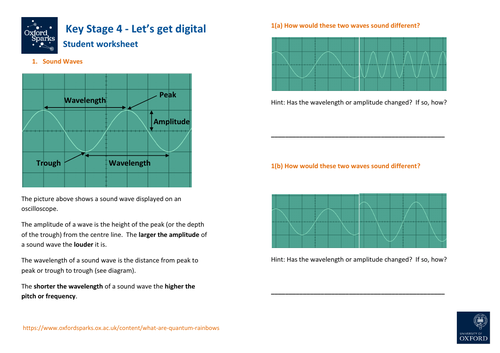




Much of our modern life involves receiving and transmitting data; watching TV, posting on social media, sending emails etc. Although we might want to receive something complicated like sound and moving images, in order to process and send the information it is first converted into a set of numbers. The numbers are stored and processed on the computer as binary code which consists of only two options, usually written as 1 and 0. This is often referred to as binary or digital.
This lesson looks at how sound can be encoded into digital form.
Learning Outcomes:
- Sound waves can be represented visually on an oscilloscope or similar.
- How amplitude and wavelength are related to volume and pitch.
- To store and process sound, computers have to convert analogue signals such as sound waves into numbers (digital).
See more at: www.oxfordsparks.ox.ac.uk/content/what-are-quantum-rainbows
Something went wrong, please try again later.
This resource hasn't been reviewed yet
To ensure quality for our reviews, only customers who have downloaded this resource can review it
Report this resourceto let us know if it violates our terms and conditions.
Our customer service team will review your report and will be in touch.